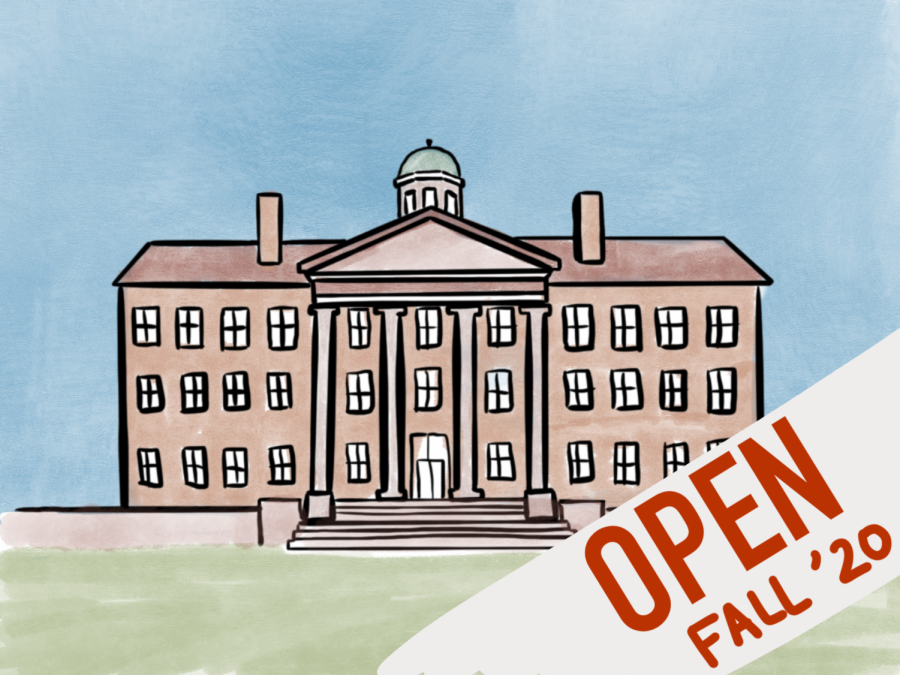Opinion | Counterpoint: Schools should bring students back to campus in the fall
June 23, 2020
This column is part of a point-counterpoint series. Read the other side of the argument here.
I just ran a marathon.
Well, not really. But I took a six-week online coding class, which felt equally arduous and overly ambitious. Don’t get me wrong, the instructor did a fine job. He made himself available outside of class through Zoom, and the course had 12 students, meaning that everyone received attention if they needed it. But teaching me, a political science and English literature major, how to code on an online video forum might stand as the closest thing to impossible.
Unfortunately, online coding classes remain just one of the many crises that students will face if universities postpone their reopening due to the ongoing COVID-19 pandemic. Outside of a less than satisfactory education, thousands of people will experience job loss, universities will face financial struggles and students with less than ideal home lives will be at a greater disadvantage than the rest.
If there was an easy solution to all of these problems, it obviously wouldn’t be up for debate at numerous universities across the country. The risk of COVID-19 is still prevalent, and the health and safety of staff and students could be compromised. But by maintaining social distancing guidelines, increasing tests and remaining vigilant and wary of spikes, universities can at least attempt to reopen, and they should.
Those who decide to stick with online classes will receive inadequate learning for an astronomical price. With the implementation of modern technology and online tools, people may assume that classes can easily be switched to an online platform. But this kind of thinking completely undermines the role of a professor and interactive learning. In my experience, classroom Zoom conferences can often feel awkward, especially if it’s one-on-one. In an actual class, people aren’t staring at 20 other faces — they’re looking ahead at the board.
In my experience, professors tend to disable video and allow students to use only voice in class. While it’s less awkward, it doesn’t provide much incentive to actually stay focused during the class period. After all, students are either staring at a white screen or looking at the professor’s screen, which isn’t exactly captivating.
Online classes are extremely convenient — they don’t even require the student to get out of their bed. But that’s the issue — this kind of structure is equivalent to skipping the lecture and skimming the PowerPoint, which is the same kind of learning that institutions have discouraged for years. While some classes that rely heavily on reading and writing may be able to take place online without difficulty, most other classes will not. And after COVID-19, most people probably won’t want to see doctors who got through half of college half asleep with Zoom lectures playing in the background.
Even though these classes are undeniably not ideal, Pitt has committed to allowing them as an option for students who don’t feel comfortable returning to class. But for students who do feel comfortable, which seems to be the majority, online classes are not optimal.
If universities didn’t reopen, students would either have the option of continuing online school for a disproportionate expense, or they would press pause on their learning. This is not a solution either, though, because they will end up delaying their graduation date, missing out on their college experience and spending months doing nothing. Since travel isn’t a viable option right now, there wouldn’t be much to do during a gap semester or year.
Not only would fewer students enroll, but universities would have to minimize their staff numbers significantly. They would have to make budget cuts in various departments, and they would be getting rid of all the food and maintenance staff, as well as other campus workers. Plus, any students that had campus jobs to help pay for tuition may have to come up with that money on their own.
Without as much tuition money coming in the door, universities would lose a significant portion of their annual income, which would also have consequences when schools did reopen. This may come out of the scholarships and financial aid that the school gives and may further increase tuition prices.
Most importantly though, keeping universities closed will serve as a major disadvantage to anyone without a comfortable or safe home life. Universities provide more than education for students — they provide resources that allow students to receive an experience that wouldn’t be found elsewhere.
Since stay-at-home orders were put in place, domestic violence has skyrocketed, and the mental health of many Americans has plummeted. If students are trapped at home, those who have less fortunate living situations will not be given the same opportunity to reach their full potential. Pitt has irreplaceable resources such as free tutoring, a food pantry, access to nutritionists and free health and counseling services.
Many students have never used these resources and may not even know they exist. But for other students, these services are vital to their academic performance. While my online coding classes may feel mentally strenuous for me, I am fortunate enough to have my own space to study and food on my plate. Others may not be as fortunate, and universities cannot ignore this part of the student population.
Throughout the last few months, COVID-19 has revealed the cracks in our country and the urgency to have better doctors, researchers and government officials. By putting a halt to higher education, institutions will only delay the next generation of this country’s leaders.
Ana writes primarily about political and cultural issues. Write to Ana at [email protected].








